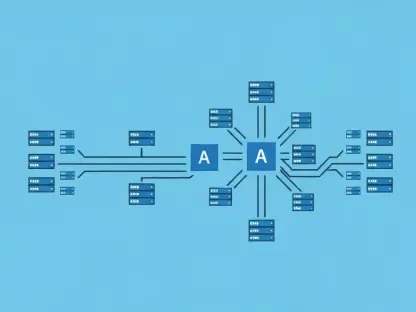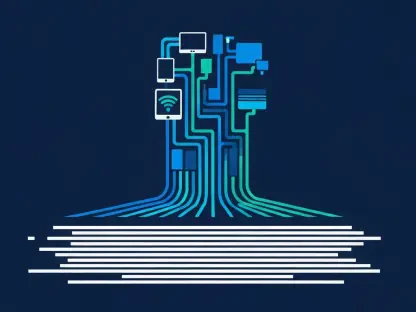The Dynamic Application Security Testing (DAST) software market is poised for significant growth over the next decade. With an ever-expanding need for robust cybersecurity measures, this article investigates the anticipated trends, pivotal drivers, and strategic insights vital for market participants to excel in an evolving landscape. By meticulously examining market size, growth rates, and the competitive landscape, a comprehensive overview is presented of what stakeholders can expect in the DAST software market from 2024 to 2032.
Market Growth and Size
The global market for Dynamic Application Security Testing (DAST) software, valued at USD 639 million in 2023, is projected to reach USD 1111.5 million by 2030. This significant growth trajectory, bolstered by a compound annual growth rate (CAGR) of 8.2%, is driven by several crucial factors. The mounting number of cyber-attacks and their increasing sophistication necessitate robust application security measures, which, in turn, drive demand for DAST software products. Additionally, stringent government regulations are compelling organizations across industries to adopt comprehensive security solutions to secure their digital assets.
The proliferation of smartphones and the integration of the Internet of Things (IoT) further contribute to the market’s rapid expansion. As more devices become interconnected, the need for advanced and reliable security testing tools becomes paramount. These tools offer a critical layer of defense against potential vulnerabilities and external threats. This comprehensive market growth is indicative of the rising importance of cybersecurity in an increasingly digital and interconnected world.
Technological and Market Drivers
Significant investments by venture capitalists and private equity investors have fueled the rise of cybersecurity startups. These startups are making considerable contributions to the overall market expansion by developing and introducing groundbreaking solutions to address the evolving security needs of various industries. The digitization and automation of industrial sectors, coupled with advancements in the financial technology space, particularly in emerging economies, are pivotal factors driving market growth. Additionally, the integration of IoT and artificial intelligence (AI) in cybersecurity applications is creating new growth avenues, enabling more sophisticated and effective security measures.
Technological advancements, paired with the increasing adoption of digital transformation initiatives, further underscore the importance of robust cybersecurity measures. As businesses continue to digitalize their operations, the need for comprehensive application security solutions like DAST software grows exponentially. The market is also witnessing the integration of advanced analytics within security applications, resulting in more proactive and predictive cybersecurity measures. This trend is likely to continue, driving further innovation and market expansion.
Key Market Players
Leading companies such as HCL Technologies (formerly IBM), Micro Focus, Veracode, Rogue Wave Software, CAST Software, Synopsys, and Parasoft are pivotal in shaping the market dynamics. HCL Technologies, which holds approximately 13% market share, stands as a significant player in this sector. These companies are investing heavily in research and development to stay ahead of the curve. By forming strategic alliances and tailoring their offerings to meet evolving consumer preferences, they are positioning themselves to capture significant market opportunities.
For these industry leaders, product differentiation is a key strategy to achieve widespread market adoption. Additionally, cost reduction and supply chain optimization ensure they remain competitive while maintaining high-quality offerings. In an industry where technological advancements and evolving threats are constant, staying ahead through innovation and strategic partnerships is essential. These key market players significantly contribute to the dynamic landscape of the DAST software market by continuously enhancing their solutions to meet the sophisticated demands of modern cybersecurity.
Market Segmentation
The DAST software market is segmented by type, including Cloud-Based and Web-Based solutions, and by application, focusing on Large Enterprises and SMEs. This segmentation provides a granular understanding of market dynamics, enabling industry participants to identify specific growth opportunities and challenges. By addressing the unique needs of different segments, companies can tailor their solutions for maximum impact and effectiveness.
Geographical segmentation further enriches the analysis, encompassing regions like the United States, Europe, Asia-Pacific, China, Japan, Southeast Asia, and the Middle East and Africa. Each region presents unique market potential and growth patterns, influenced by local regulatory frameworks, technological adoption rates, and the prevalence of cyber threats. Understanding these regional nuances is crucial for devising targeted strategies that address distinct market conditions and customer needs.
Strategic Insights and Competitive Landscape
A detailed analysis of market strategies and the competitive landscape is essential for crafting effective business strategies in the DAST software market. The research highlights the critical importance of strategic investments in research and development (R&D), forming strategic alliances, and tailoring offerings to meet evolving consumer preferences. Companies that prioritize these strategies are better positioned to navigate the complexities of the market and capture emerging opportunities.
The intertwined impact of the COVID-19 pandemic and the Russia-Ukraine war has reshaped market dynamics, emphasizing the need for agile cybersecurity strategies. The pandemic accelerated digital transformation, leading to an increased reliance on secure online operations, while geopolitical tensions further underscored the importance of robust cybersecurity measures. Companies must stay informed about regulatory changes and leverage technological advancements to enhance their security measures effectively.
Overarching Trends
Several overarching trends are shaping the DAST software market, driving its growth and evolution. The rise in cybersecurity concerns and the escalating complexity of cyber threats demand robust application security measures. Governments worldwide are enforcing stricter regulations to ensure the security of digital applications, fostering the adoption of DAST software. These regulations compel organizations to implement comprehensive security strategies, further driving market growth.
The convergence of IoT, AI, and advanced analytics in cybersecurity applications is creating new growth avenues within the market. Significant capital inflow into cybersecurity startups is enhancing innovation and expanding market offerings, facilitating overall market growth. By leveraging these technological advancements, the DAST software market is poised to address the increasing sophistication of cyber threats effectively.
Consensus Viewpoints
The Dynamic Application Security Testing (DAST) software market is on the brink of substantial expansion over the coming decade. As cybersecurity threats continue to evolve and proliferate, the demand for effective security measures is set to skyrocket. This article delves into anticipated trends, key driving forces, and strategic insights critical for industry players aiming to succeed in this changing environment.
A thorough analysis of market size, growth trajectories, and the competitive landscape is provided, offering stakeholders a detailed perspective on what to expect in the DAST software market between 2024 and 2032. The increasing frequency and complexity of cyberattacks necessitate advanced DAST solutions, which scan applications at runtime to identify vulnerabilities. As more organizations recognize the importance of safeguarding their digital assets, investment in DAST technologies is expected to rise.
Moreover, regulatory frameworks and compliance requirements are becoming more stringent, prompting companies to adopt robust security testing solutions. The integration of machine learning and AI in DAST tools is another trend to watch, as these technologies enhance the capability to detect and respond to threats in real-time.
In summary, the decade ahead promises significant growth and transformation in the DAST software market. By staying informed about emerging trends and adapting to the dynamic competitive landscape, businesses operating in this sector can position themselves for success and resilience.









